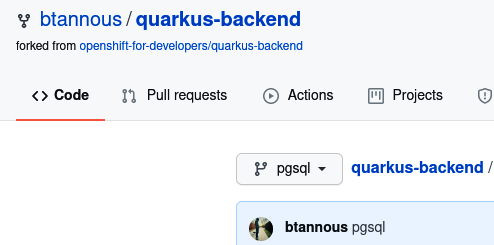Chapter 7. Evolving the Application: Data Persistence
As you saw in the preceding chapter, the current deployment of the quarkus-backend only stores the list of posts in memory. Keeping lists in memory is excellent for performance, but all the posts will be lost each time the app restarts. Now, imagine if your bank lost your account information each time it decided to add a new feature or fix an issue. You’d probably be first in line at a new bank.
State is a critical aspect of many applications, and databases are one way to handle the information your application needs to keep, such as tracking your bank account’s ledger or maintaining the list of notes when the quarkus-backend restarts. In this chapter, you will deploy a PostgreSQL database and bind the Noted app to it to store the posts.
Database Without Delay
If you read the subtitle of the book, you know you’re supposed to be impatient. To spare you some waiting, your forked version of the quarkus-backend component already has a Git branch called pgsql with wiring in place to connect to a database. Check it out by opening a browser window to https://github.com/<your-name>/quarkus-backend/tree/pgsql (see Figure 7-1).

Figure 7-1. GitHub quarkus-backend pgsql branch
Database Templates
First you need to deploy a database for the pgsql branch to connect to. OpenShift makes it easy to deploy a database for development using ...
Get OpenShift for Developers, 2nd Edition now with the O’Reilly learning platform.
O’Reilly members experience books, live events, courses curated by job role, and more from O’Reilly and nearly 200 top publishers.

